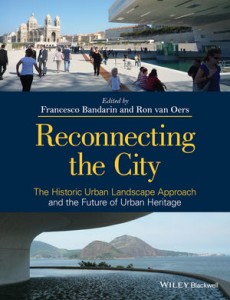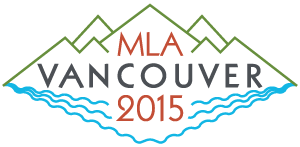In sunny Oslo for the first conference of the Digital Humanities in the Nordic Countries, with a wide range of approaches to the digitalising humanities. I’ll present today (15.3.) on narrative approaches to public participation geographic information systems (PPGIS) in urban planning, a paper co-authored with Maarita Kahila, Jenni Kuoppa, and Marketta Kyttä. One of the key arguments is that digital humanities should also comprise humanities approaches to the digitalising society, not only digital approaches to humanities sources. A second argument is that a more integrated and more narrative use of PPGIS could open up experiential knowledge – with considerable consequences for the legitimacy claims of current planning practices.
Very interested to see to what extent the digital humanities live up to (mixed) expectations. What to make of Franco Moretti’s statement that the “digital humanities” mean “nothing”? How to integrate a sense of closeness to “distant reading” (Moretti, again)? And what can digital humanities add to urban studies and digital cities? I haven’t managed to get my hands on Benjamin Fraser’s Digital Cities, but it would appear some answers to the challenges of the “urban geo-humanities” could be found there.
The full program of the conference Digital Humanities in the Nordic Countries can be found here. The abstract of our paper below:
Narrative Approaches to the Digitalization of Participatory Urban Planning:
Bringing Plot and Metaphor to PPGIS methods
Lieven Ameel
University of Tampere, Finland
Maarit Kahila, Jenni Kuoppa, Marketta Kyttä
Aalto University, Finland
The last decades have seen a distinct “narrative” turn in urban planning practices and theory (Ameel 2016, Sandercock 2010). At the same time, planning has become increasingly reliant on digitalization in the way it carries out the participation of citizens. In planning practices, digitalization appears as a set of various instruments that can be understood as ecosystem of digital tools (Wallin et al 2010; Saad-Sulonen 2014). Amongst the most established methodologies developed to communicate with local participants and to gather information as part of participatory planning are public participation geographic information systems (PPGIS) (e.g. Brown & Kyttä 2013). These methods tend to result in a wide range of place-related information, often structured in the form of stories. The digitalization of planning processes, and the view of planning as a form of “persuasive story-telling” (Throgmorton 1996) have resulted in a number of challenges. How to aggregate the data gathered through PPGIS into meaning-making knowledge that can have effective impact on planning and policy? How to develop PPGIS that incorporate and activate story-telling mechanisms? In our paper, we will examine the potential of narrative approaches from literary and narrative studies for developing new methodological frameworks for digital participatory planning practices. The relevance of this paper lies not only in its interdisciplinarity, but also in the way it addresses key questions concerning the status of different kinds of knowledge (experiential and “soft” knowledge, in particular), as well as, more implicitly, the issues of democracy and inclusion in planning and policy.
We will focus on two specific concepts from literary and narratives studies: plot and metaphor; i.e. the causal chain of events that drives narrative, and the rhetorical tropes used to describe these changes. These concepts could further enrich the analysis and development of PPGIS in two distinct ways. First, by providing a framework with which to systematically evaluate the material gathered in PPGIS methods, drawing on a long expertise within narrative studies in analysing narrative topographies. And second, by offering new narrative approaches with which PPGIS methods could be developed in ways that strengthen the narrative characteristics of both the methods themselves, the responses given, and the way these feed into the overall planning practices in a particular project. This includes reconsidering the questions asked and responses elicited in PPGIS, as well as linking responses to broader narrative frames and the way in which metaphorical language (city as “body”; district as “oasis”) is used to describe a planning area.
We will examine narrative approaches in the context of PPGIS in two specific case study: “Enjustess” (http://www.syke.fi/projects/enjustess) and “Hanko of Memories and dreams” (http://maptionnaire.com/en/393/). The first case, which studied the use and management of aquatic environments in the Helsinki region, could be considered as a more traditional approach to PPGIS. In the case of Hanko, the traditional PPGIS was enlarged and participants were invited to provide information in a variety of forms: written texts, structured answers, and audio material (using PPGIS methods including an innovative media-installation) as well as photographs.
Sources
Ameel, Lieven (2016) (forthcoming): “Emplotting urban regeneration: Narrative strategies in the case of Kalasatama, Helsinki.” In Rajaniemi, Juho (ed.) DATUTOP.
Attili, Giovanni (2003): “Beyond the Flatlands. Digital Ethnographies in the Planning Field.” In Sandercock, Leonie & Attili, Giovanni (eds.): Multimedia Explorations in Urban Policy and Planning: Beyond the Flatlands. Springer, Dordrecht, 39-56.
Brown, G., & Kyttä, Marketta (2013). ”Key issues and research priorities for public participation GIS (PPGIS) for land use planning: A synthesis based on empirical research.” Applied Geography 46 (1), 122-136.
Saad-Sulonen, Joanna (2014): Combining Participations. Expanding the Locus of Participatory E-Planning by Combining Participatory Approaches in the Design of Digital Technology and in Urban Planning. Espoo: Aalto University Publication Series.
https://aaltodoc.aalto.fi/bitstream/handle/123456789/13352/isbn9789526055435.pdf?sequence=1
Sandercock, Leonie. (2010): “From the campfire to the computer: An epistemology of multiplicity and the story turn in planning.” In Sandercock Leonie & Attilli (eds.): Multimedia Explorations in Urban Policy and Planning: Beyond the Flatlands, Giovanni, Springer, Heidelberg, 17-37.
Throgmorton, James A. (1996): Planning as persuasive storytelling: The rhetorical construction of Chicago’s electric future. University of Chicago Press, Chicago.
Wallin et al (2010):Digital Tools in Participatory Planning. Espoo: Centre for Urban and Regional Studies Publications.
https://aaltodoc.aalto.fi/bitstream/handle/123456789/4832/isbn9789526032603.pdf?sequence=1



